The Spanish Insurance Market in 2018
Author: MAPFRE Economics
Summary of the report’s conclusions:
MAPFRE Economics
The Spanish Insurance Market in 2018
Madrid, Fundación MAPFRE, July 2019
In 2018, global insurance activity was positive for the seventh consecutive year, reaching 5.2 trillion US dollars in direct insurance premiums, or growth of 1.5% in real terms vs. the previous year. The main stimulus came from the Non-Life line of business, driven by the sustained dynamism of the global economy, mainly in the first half of the year, with 3.6% growth for the whole of the year. However, it is estimated that in 2019 the sector may drop by about 3%.
Spain registered 2.4% economic growth in 2018 (after the methodological review by the INE), with a gradual deceleration of the economy, which is expected to continue in the upcoming two years.
In this context, the premium volume in the Spanish insurance market during 2018 totaled 64.4 billion euros, 1.5% higher than the previous year, thanks to the 4% growth in the Non-Life lines of business, as well as the excellent performance of Life Risk insurance, which grew 12.3%. However, the latest data from the ICEA point to a slowdown in these lines of business in the first nine months of 2019, in line with the slowdown in the Spanish economy.
For their part, Life Savings insurance premiums retracted in 2018, which caused the total Life segment to close out the year with a drop of -1.4% (29 billion euros in premiums). This trend is still strongly influenced by a persistent environment characterized by low interest rates, as is the case in the rest of the eurozone (see Chart 1-a). Until September 2019, the fall in Life Savings premiums continued to increase, by approximately -4% compared to the same period in the previous year.
Despite the above, in terms of managed savings, positive growth continued its course thanks to a 2.6% increase in technical Life insurance provisions in 2018. Moreover, including the data recorded in September 2019, this growth has risen to 3.7%. These developments are explained by the profitability of existing portfolios, which were acquired at a time when interest rates were at higher levels, and the effect on their valuation after the new rate cuts.
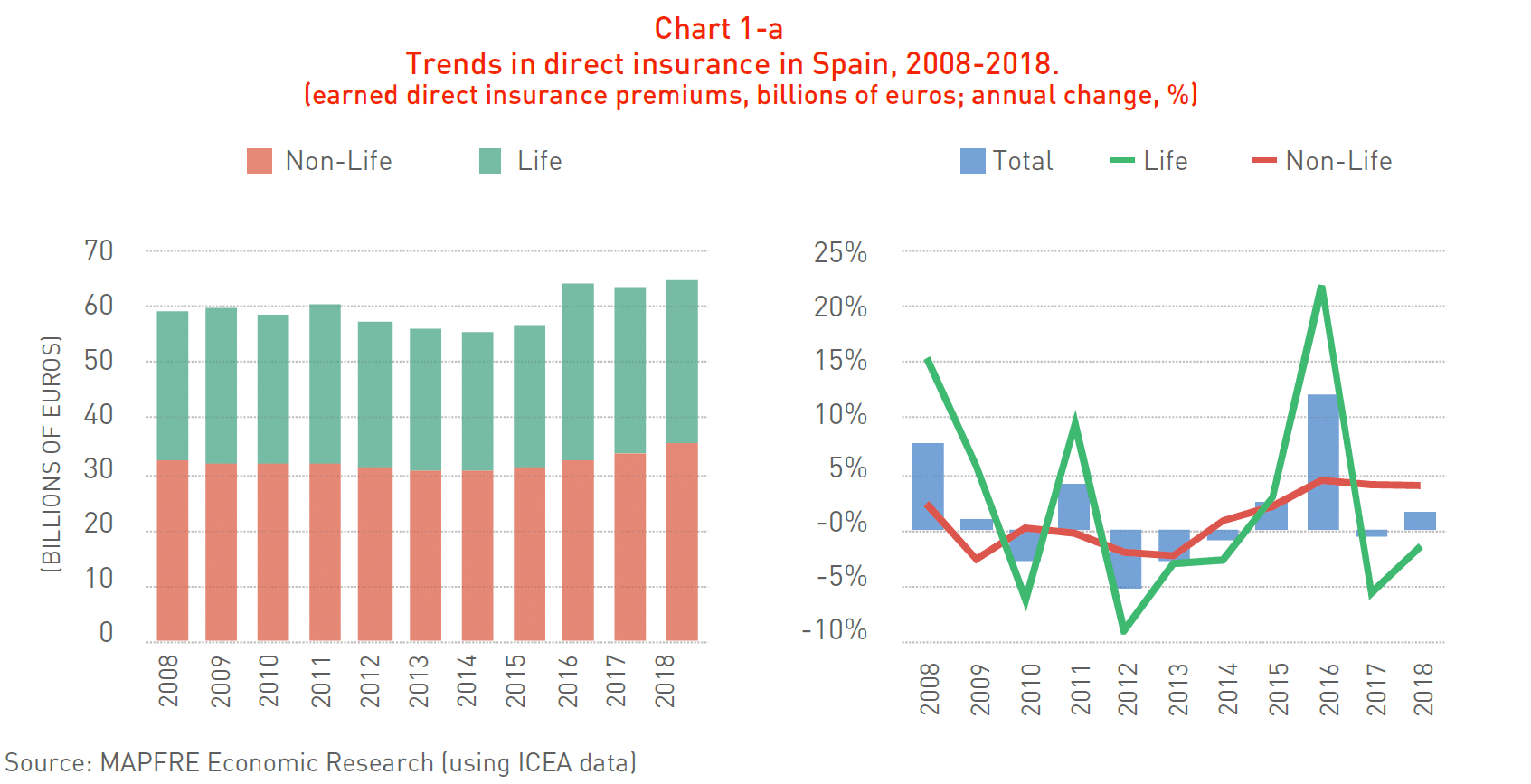
Additionally, in 2018, Non-Life insurance maintained its growth at 4.0%, up to 35.4 billion euros—the fifth consecutive year in which the premiums of this segment of the insurance market have grown. In the first nine months of 2019, a slowdown was observed, with growth of around 2.9%, in line with the economic slowdown.
Automobile insurance continued to be the line of business accumulating the greatest premium volume within the Non-Life insurance segment, accounting for 31.5%. With the figures as on September 2019, the growth in automobile business premiums was 1.4%, compared to the same period last year, so growth continues to slow down, in line with what happened in 2018 (see Table 1-a).
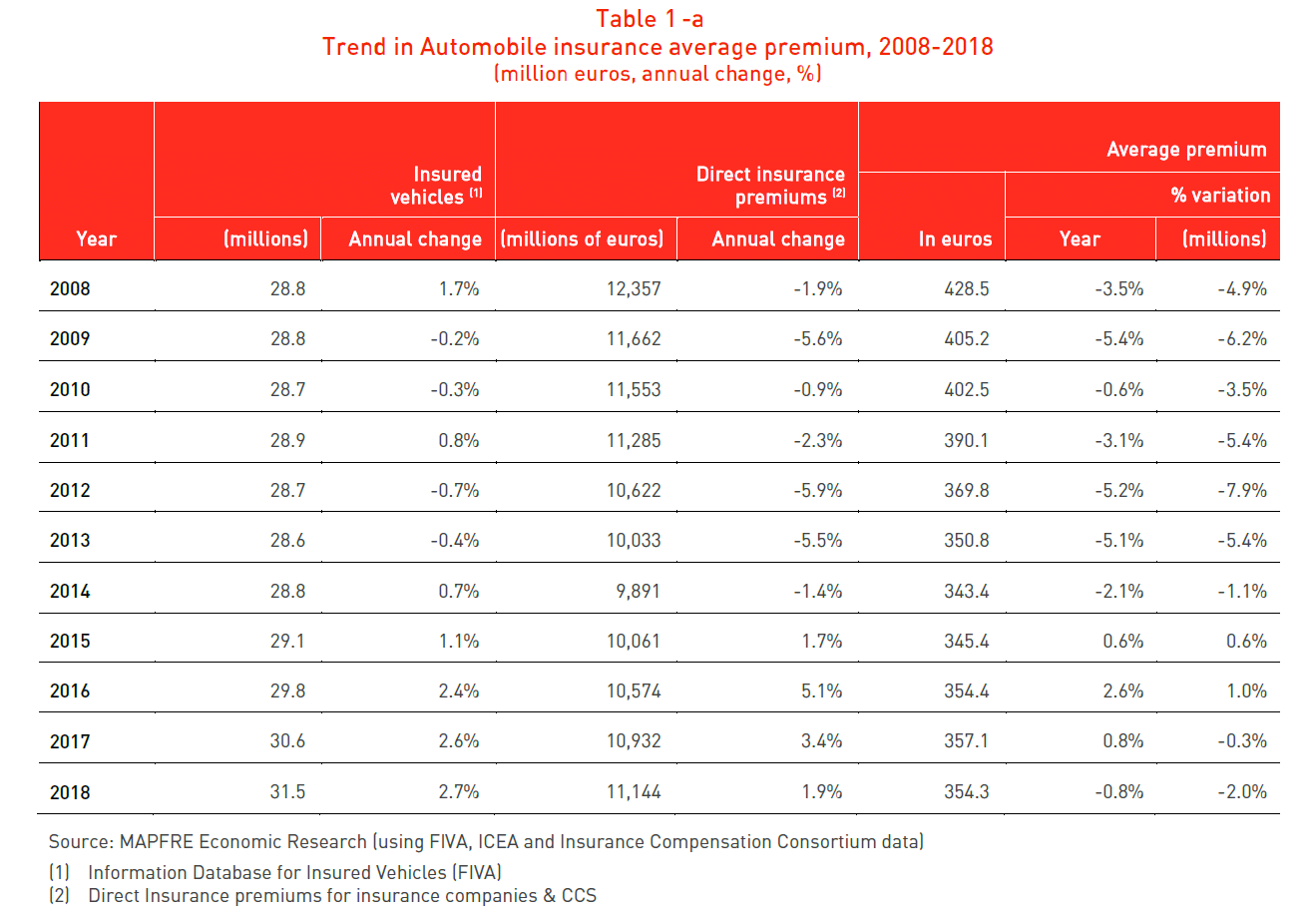
Regarding profitability, the combined ratio for the Non-Life insurance segment in 2018 continued along the path of improvement experienced in recent years, reaching 93.7% (see Chart 1-b).
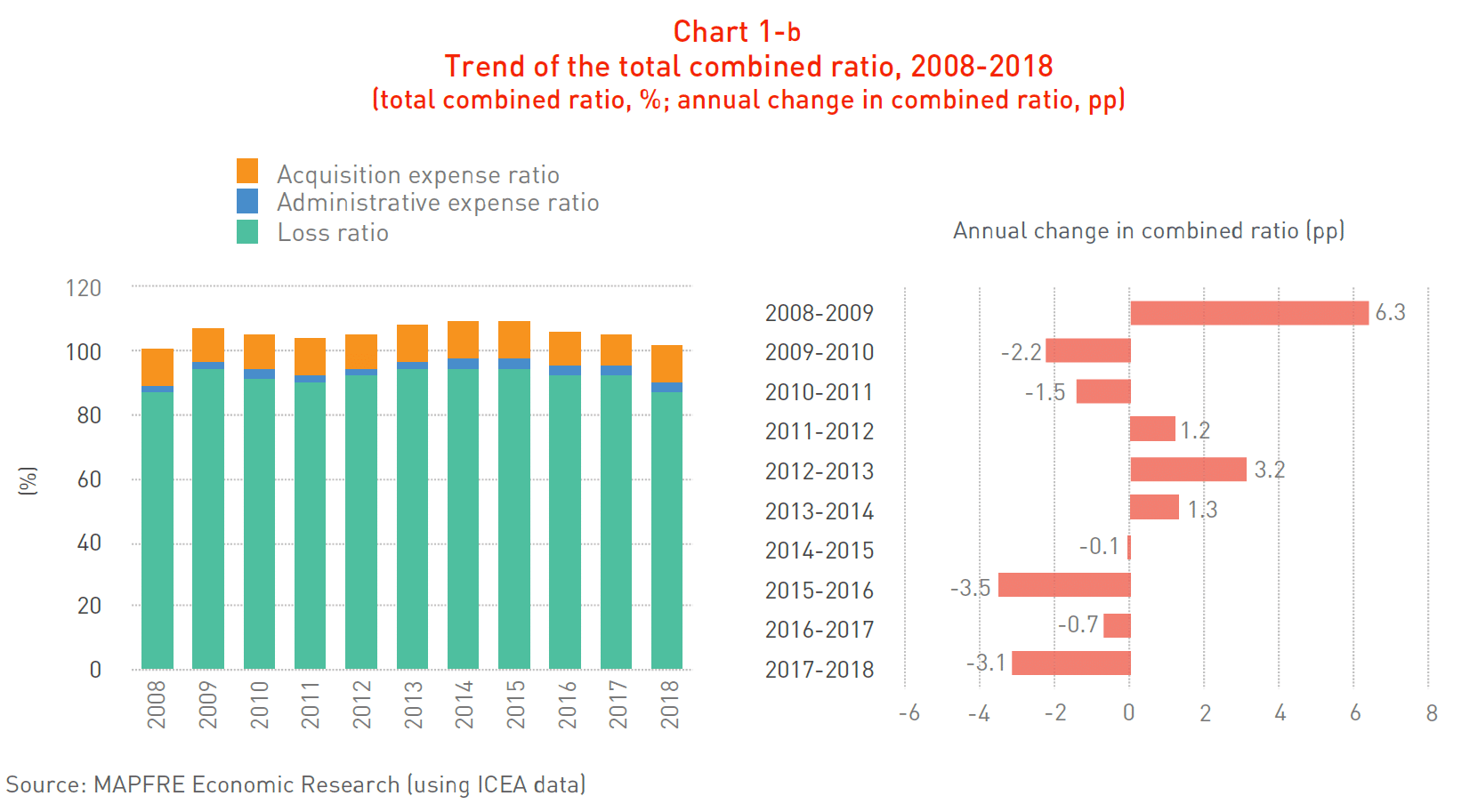
This improvement in technical profitability is allowing the Spanish insurance industry to largely compensate for the loss of profitability of the investment portfolios due to low interest rates (see Chart 1-c).
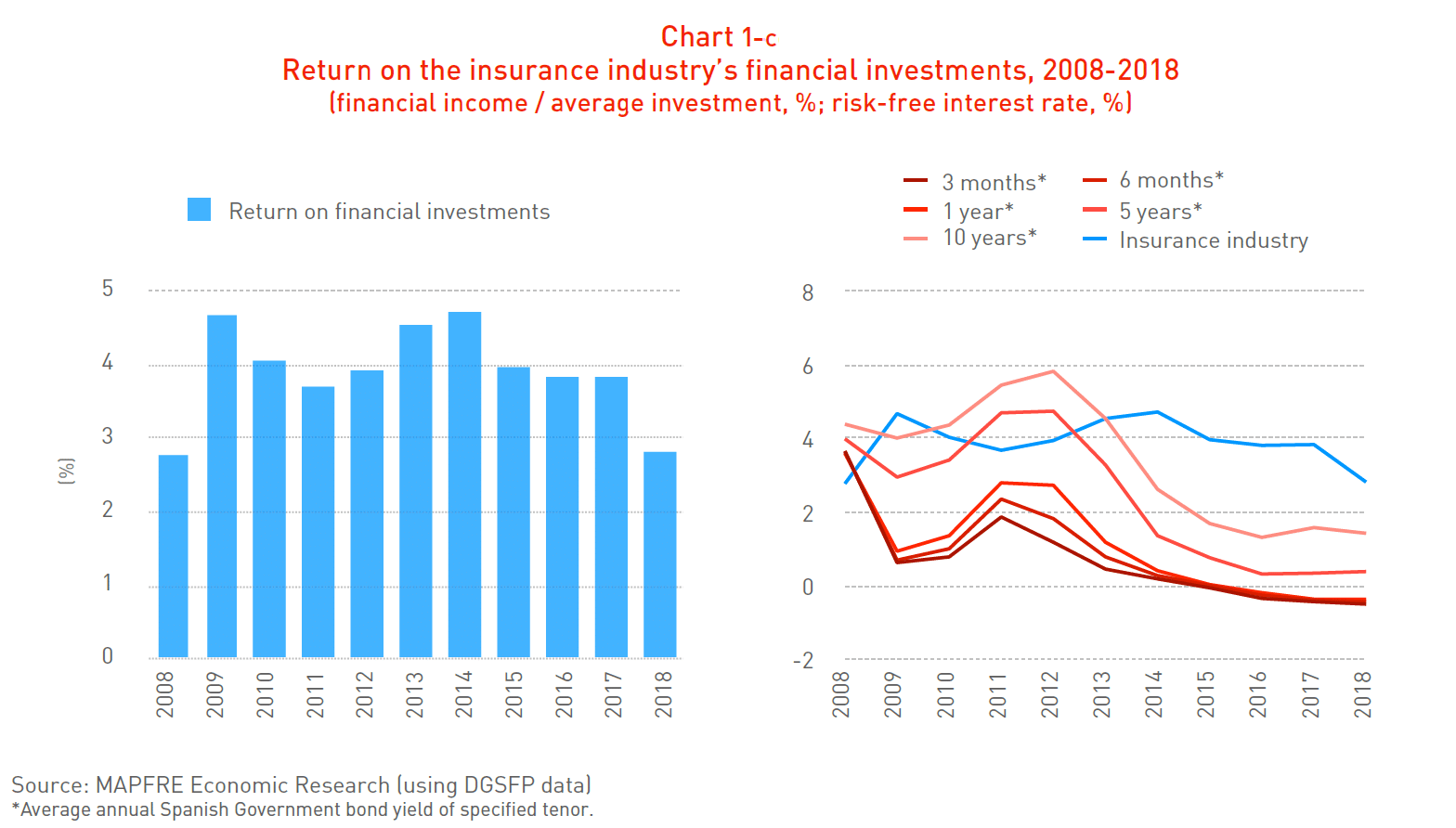
Moreover, the indices of insurance penetration, density and depth registered slight falls in relation to the previous year, remaining below the average of said indices for the 15 main economies in the European Union (see Chart 1-d).
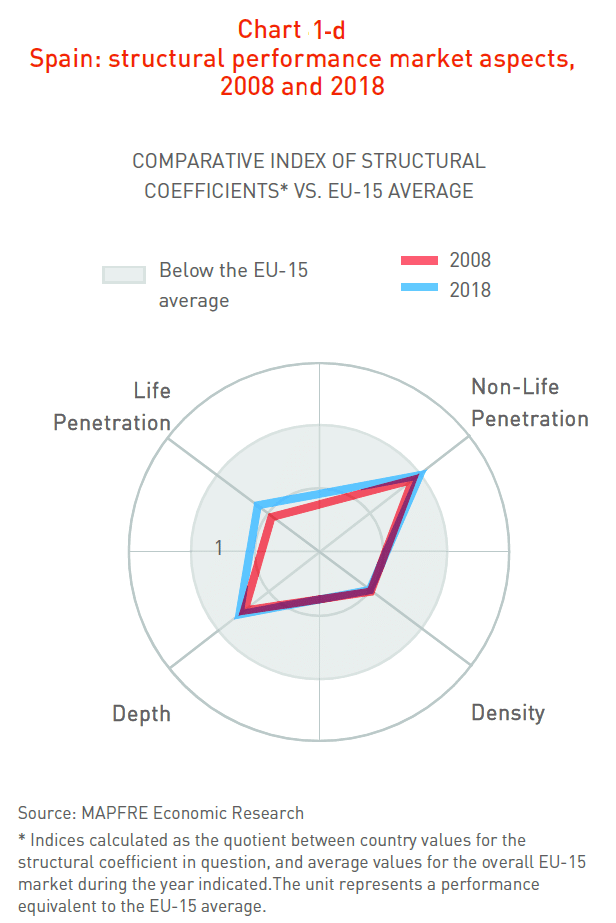
A detailed analysis of the different lines of business and structural trends over the last decade can be found in the report The Spanish Insurance Market in 2018, prepared by MAPFRE Economics and available at the following link:



